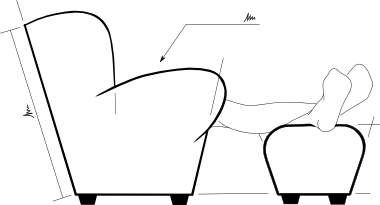Why a Velomobile? Speed
One of the clear advantages of a velomobile over an un-faired bike is increased speed. Higher maximum and cruising speeds are possible because the faired cycle has lower drag; and drag is the enemy of speed.
This means that in a velomobile (when compared to a bike):
-
You can travel faster with the same amount of effort.
-
Or go the same speed with less effort
Without drag, the speed of any vehicle would continue to increase as long as energy was being expended to push it forward, and would then continue to travel at the same speed when the energy input was stopped. Obviously this doesn’t happen when you ride a bike, your top speed is limited by the energy required to push the air in front of you out of the way. And when you stop pedalling, this air is moved using kinetic energy from the movement of the vehicle, until you and it come to a stop.
-
Running Resistance – the total force that slows a vehicle moving forwards. It is the sum of rolling resistance, aerodynamic drag and climbing resistance.
-
Rolling Resistance – The force caused by the deformation of the tyre as it rolls over the road surface that slows it down. This varies little with speed.
-
Aerodynamic Drag – The force exerted on the vehicle by the air, as that air is deflected out of the path of the vehicle. This force increases as a square of velocity.
-
Climbing Resistance – The angulag component of the force of gravity that slows a vehicle as it goes uphill. When travelling downhill, this force increases vehicle speed.
Knowing that rolling resistance is the greatest part of running resistance – that is: to assume rolling resistance is so small as to be negligible, and on a level road so climbing resistance equals zero – a plot of aerodynamic drag against speed shows a clear difference between the effort required to pedal a bike or a velomobile to the same speed.
 Aerodynamic Drag Power for HPVs
Aerodynamic Drag Power for HPVs
I’ve converted the aerodynamic drag[1] from a force to power[2] to make it easier to compare the maximum speed per vehicle with the power output from the rider. Because rider capability is usually expressed as power capability, reading across a power level gives an idea of the difference in speed per vehicle for the same pedal effort.
Matching raw power output figures on the graph doesn’t give a very good idea of the advantages for an actual human without knowing that person’s capability. I’m assuming the following figures are realistic[3]
-
Steady output for any rider: 100-150W
-
Steady output for a fit rider: up to 250W
-
Sprint output for any rider: up to 250W
-
Sprint output for a fit rider: up to 350W
-
Sprint output for a trained athlete: may be up to 500W
From the graph, if rider is able to cruise on an upright bike at just over 16mph (26kph) (150W), in a velomobile, that speed would closer to 27mph (43kph). Fast enough to keep up with cars around town!
While a fast sprint of 300W doesn’t get an upright rider faster than 23mph (37kph), in a velomobile, that is 35-38mph (56-61kph).
Frankly, I’m amazed by the efficiency of the Varna Diablo (a 2 wheeled streamliner – similar to the record breaking Varna Tempest) at 150W, any rider would be travelling at nearly 50mph (remember the aero drag is the major part, but not all of, the running resistance), it really shows how inefficient upright bicycles are. If only the Diablo it was practical enough to ride every day!
The difference in speed of the velomobile is very easy to see in these three videos (3mins, 10mins and 4mins):
ICE Trice recumbent trike QNT vs QNT / Borealis velomobile
Both the riders in this video are on the same model of recumbent trike, just the cameraman doesn’t have the QNT Borealis faring. Watch how quickly the Borialis pulls away as they both go downhill (esp. from 1:50).
How to velomobile
A fast commute home for this rider, watch how many bike riders he passes on the way!
Quest high speed downhill riding
This is downhill ride with a maximum speed of 101kph (63mph) for the camera-velo and 111kph (69mph) for the yellow one.
Just in case you’re not convinced by my estimates of cruising speed, check out this video of almost 8 minutes of high speed (over 35mph) velomobile piloting: http://www.youtube.com/watch?v=kwprOZbopWo
[1] -Aerodynamic drag values are taken from www.adventuresofgreg.com/HPVlog/VehicleDrags.html.
[2] - Power = Force × Velocity
[3] - Human power output approximations are taken from the graph presented in Human Power Journal, volume 12, no. 1, page 17 (1995). While the “Reasonable Humans” range is “from a guesstimation I made from observing myself and a cross section of more average people” it appears to be a reasonable approximation.

Opus the Poet wrote, “Judging by the picture you released of the concept your drag profile will be to the left of the Mango and the right of the upwrong bike. You'll be faster than a regular bike but slower than the really streamlined VM, at least on the flat. However you have the possibility of being significantly lighter than the two VM in your chart which might make for higher point-to-point speed if there are numerous significant hills on the route”